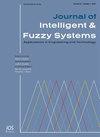EEG-based drowsiness analysis using OpenBCI and deep learning approaches to establish driving safety
IF 1
4区 计算机科学
Q3 COMPUTER SCIENCE, ARTIFICIAL INTELLIGENCE
引用次数: 0
Abstract
Drowsiness is the inactivated state of the brain and observed during the transition from awaken state to sleepy state. This inactive state diminishes an individual’s attention and leads to accidents during professional or personal activities. The prediction of this inactive (drowsiness) state using AI plays a substantial role in the avoidance of accidents. The advancements in the field of Artificial Intelligence and Neuroscience approaches are used for the prediction of this inactive drowsy state. In order to prevent these devastating accidents, the state of drowsiness of the driver has to be be monitored. Electroencephalogram (EEG) is a predominant tool adopted to examine various states of the brain effectually. It is generally known as Brain-Computer Interface System. The EEG channels are used for predicting the inactive state while implementing the real-time applications. However, the researchers face various challenges during execution based on the classification and channel selection process. This research concentrates on modelling and efficient drowsiness prediction methods and intends to bridge the gap encountered in the existing approaches. A novel stacked Long Short-Term Memory(s - LSTM) with Deep Fully Connected- Convolutional Neural Network (DFC - CNN) is used to learn and memorize the long-term feature dependencies and attains essential information based on time-series prediction. Single and multi-channel EEG data is considered to measure the statistical characteristics of available EEG signals. The online available OpenBCI sleep analysis data is used for performing the experimentation, and run in GoogleColab environment. The proposed s - LSTM model provides a better trade-off compared to existing approaches. The model generalization is improved with the validation of combined feature subjects. Here, metrics like prediction accuracy, RMSE, false positives, scaling coefficients related to false positives are measured to show the significance of the model.基于脑电图的困倦分析,使用OpenBCI和深度学习方法建立驾驶安全
困倦是大脑的一种不活跃状态,在从清醒状态到困倦状态的过渡过程中被观察到。这种不活跃的状态会减少个人的注意力,并导致在专业或个人活动中发生事故。使用人工智能预测这种不活跃(困倦)状态在避免事故方面发挥了重要作用。人工智能和神经科学领域的进步被用于预测这种不活跃的困倦状态。为了防止这些毁灭性的事故,必须对驾驶员的睡意状态进行监测。脑电图(EEG)是一种用于有效检查大脑各种状态的主要工具。它通常被称为脑机接口系统。在实现实时应用时,EEG通道用于预测非活动状态。然而,研究人员在基于分类和通道选择过程的执行过程中面临着各种挑战。本研究集中于建模和有效的嗜睡预测方法,旨在弥补现有方法中遇到的差距。采用深度全连接卷积神经网络(DFC - CNN)的堆叠长短期记忆(s - LSTM)学习记忆长期特征依赖关系,并基于时间序列预测获得必要信息。考虑单路和多路脑电信号来衡量可用脑电信号的统计特性。实验使用在线OpenBCI睡眠分析数据,并在GoogleColab环境中运行。与现有方法相比,所提出的s - LSTM模型提供了更好的折衷。通过组合特征主体的验证,提高了模型的泛化能力。在这里,测量诸如预测精度、RMSE、假阳性、与假阳性相关的缩放系数等指标来显示模型的重要性。
本文章由计算机程序翻译,如有差异,请以英文原文为准。
求助全文
约1分钟内获得全文
求助全文
来源期刊

Journal of Intelligent & Fuzzy Systems
工程技术-计算机:人工智能
CiteScore
3.40
自引率
10.00%
发文量
965
审稿时长
5.1 months
期刊介绍:
The purpose of the Journal of Intelligent & Fuzzy Systems: Applications in Engineering and Technology is to foster advancements of knowledge and help disseminate results concerning recent applications and case studies in the areas of fuzzy logic, intelligent systems, and web-based applications among working professionals and professionals in education and research, covering a broad cross-section of technical disciplines.
 求助内容:
求助内容: 应助结果提醒方式:
应助结果提醒方式:


